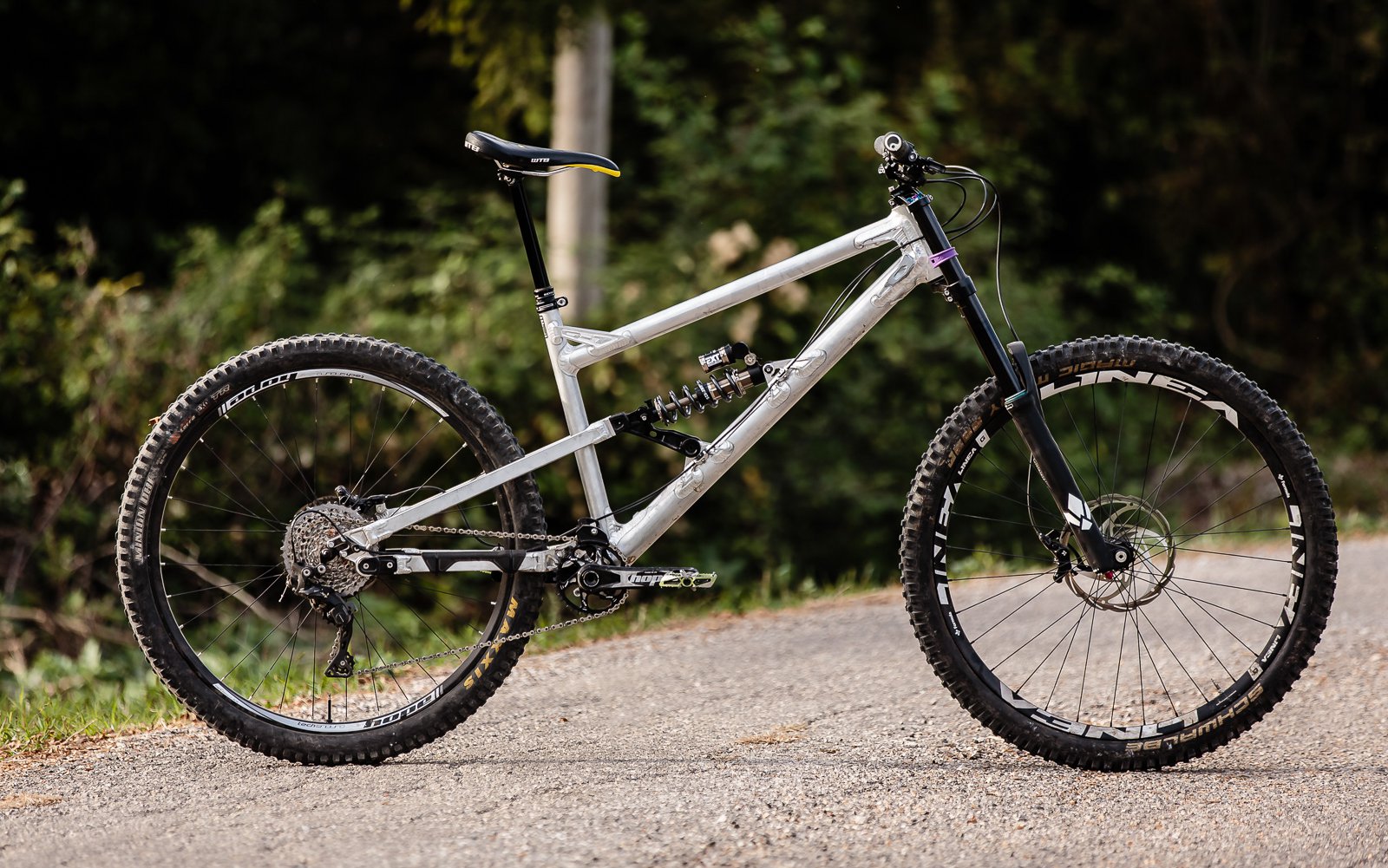
Editorial
Bike Weight vs Bike Geometry
While recently chatting with Chris Porter for the NSMB podcast the topic of bike weight once again reared its ugly head. I've never been extra driven to use lightweight products but occasionally have fallen for them. It’s funny because I was also physically stronger when I was more easily persuaded by lighter-weight parts…
Discussing weight with Chris, the topic quickly took course down a road I’ve found myself on from time to time. I realized during the conversation that although my trail bike is now the heaviest owned,* it hasn't held me back from my riding group. When going up, the largest impact has always been my physical fitness and if I’m sucking wind, it’s because I’m sucking wind and has nothing to do with the weight of the bike.
*If I don’t include the first bike I used to pedal around on, which was a Cove Shocker
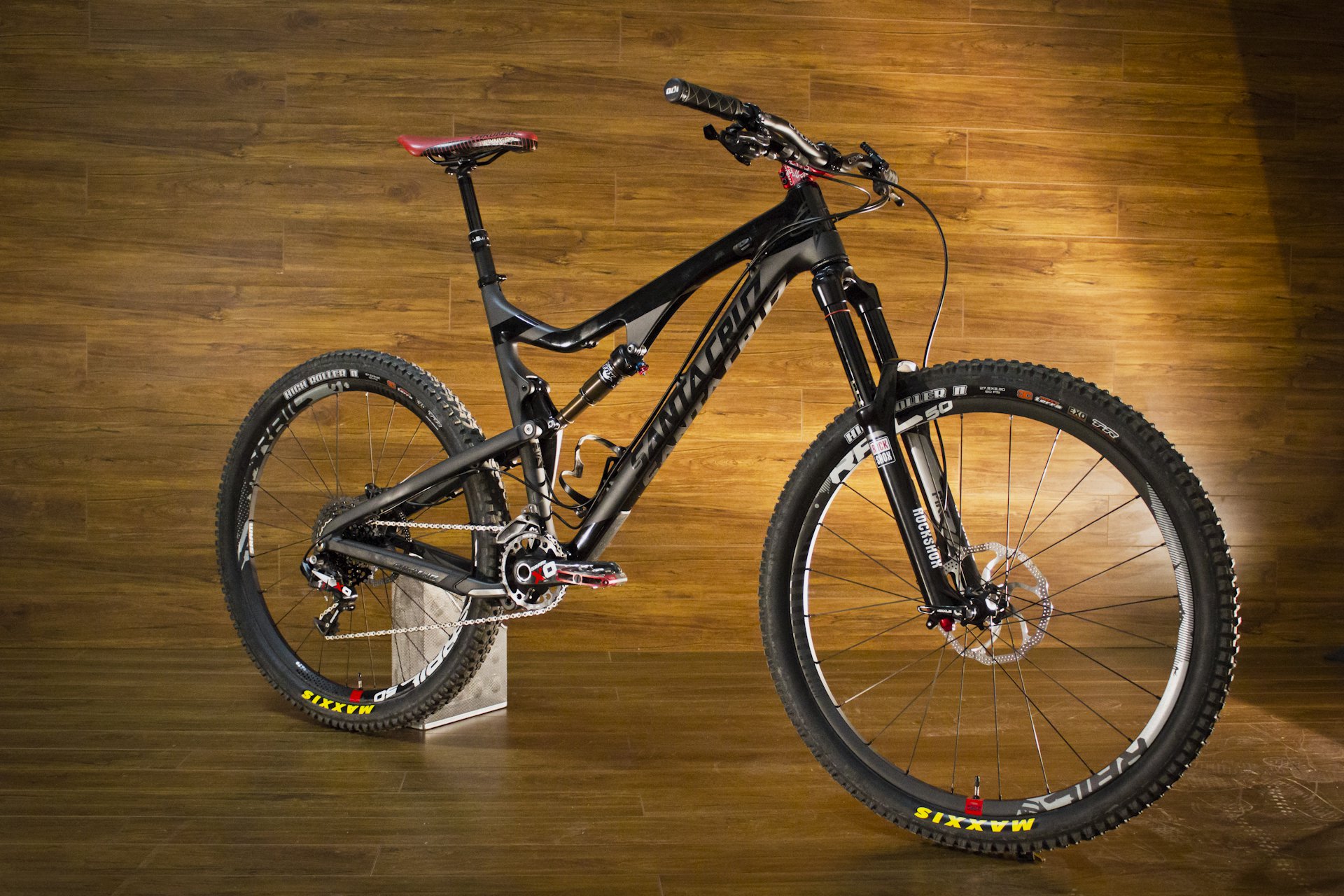
The last bike I built while caring about weight was my Santa Cruz Bronson. Unfortunately, I don't remember what it weighed and I had a thing for custom vinyl, which wasn't smart when trying to keep it light-ish but I really didn't like the stock colours.
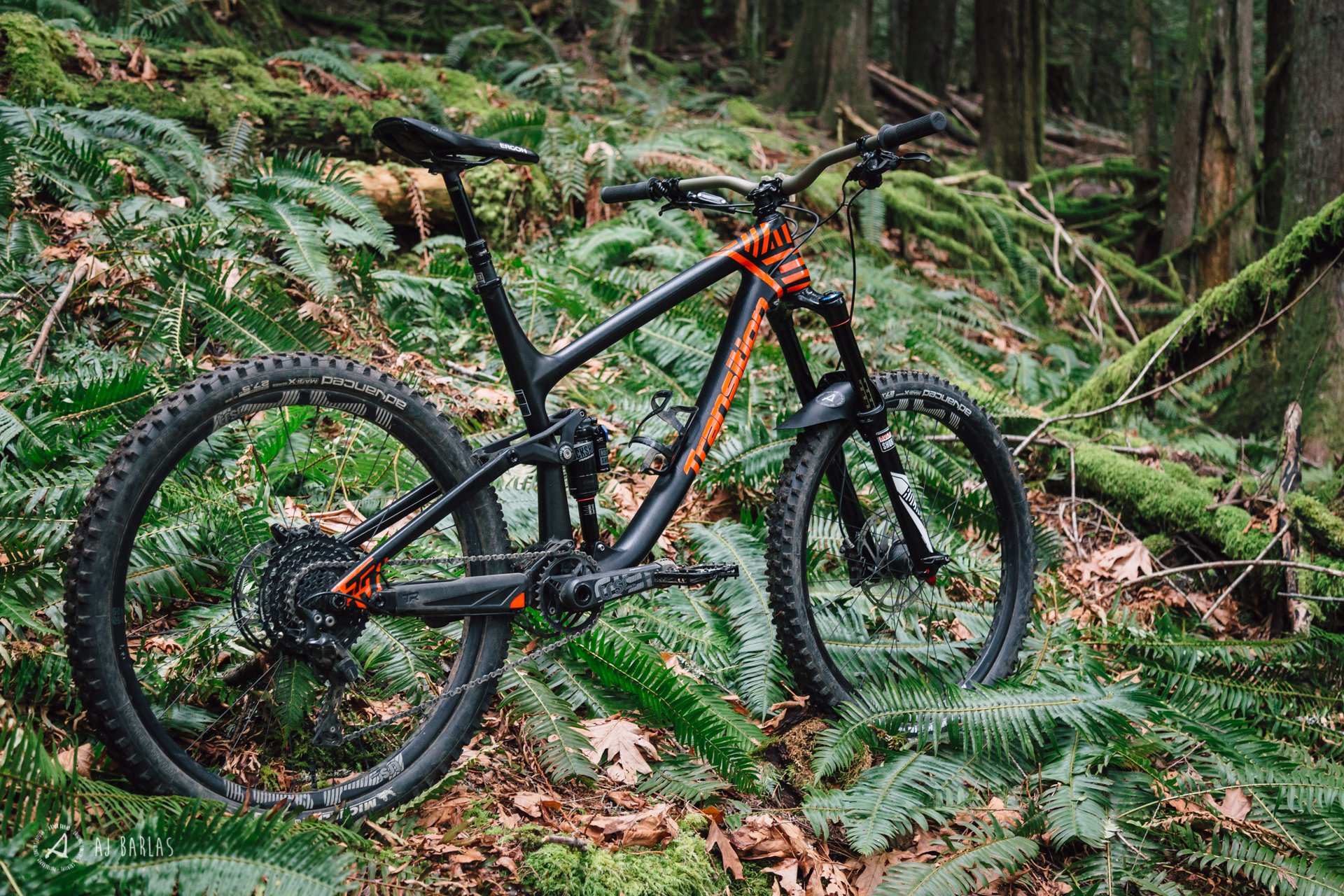
A couple of bikes later was the Transition Patrol. I didn't weigh it and built it with a mix of review parts. It still had carbon wheels, cranks etc. My thing for custom vinyl continued and again, I wasn't drawn to the stock colour options. The carbon cranks were removed and replaced with Shimano once the review was done and a custom set of alloy wheels were fitted too.
I haven’t weighed a personal bike in many years and I build them with the parts I prefer; sod the cumulative weight of them all. Weighing the bike by feel, my G1 is the heaviest trail bike I’ve had. My old downhill bikes weighed more but they were used in the Whistler Bike Park or shuttled to the top. Compared to my other trail bikes, the G1 is the largest mass, has heavier wheels and tires, and otherwise similar components where the Patrol finished, making it a safe estimate. Yet I happily pedal it everywhere those before it went and in more comfort.
When I first started riding BMX, the industry was at a place where getting the heavier part was often more desirable. The lighter stuff typically didn’t handle the abuse of hacks like me learning to feeble grind concrete ledges en route to the local skate park, and certainly didn’t hold up to the bike being ditched when things went wrong, which was often.
As time passed, designs improved and parts got lighter while remaining reasonably robust, but a limit was reached. Similar seems to be happening in mountain bikes. When carbon parts first gained popularity, weight savings were often a highlight but some carbon wheels and frames now weigh as much or more than their metal counterparts.
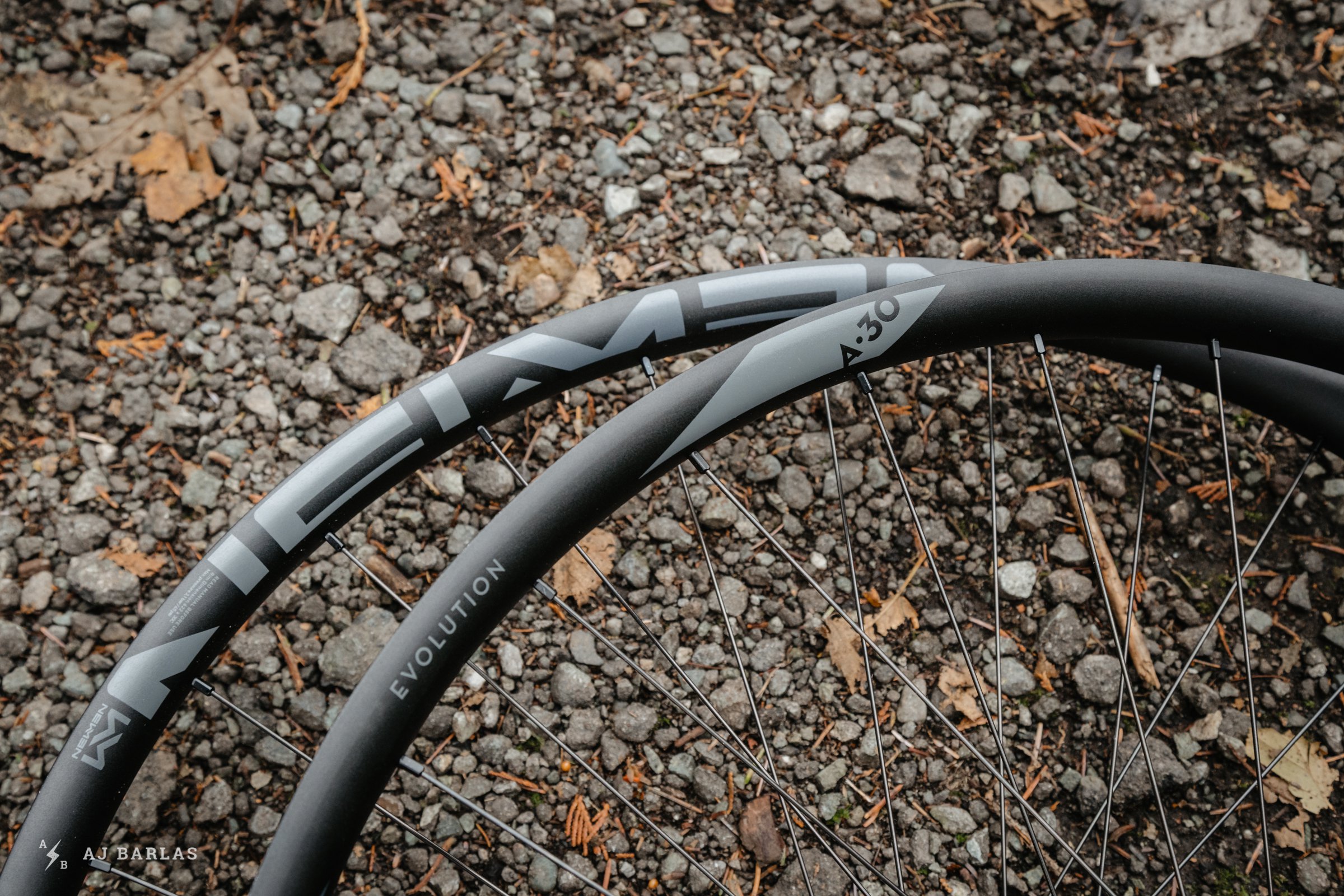
The Newmen SL A.30 wheels have been the toughest light-ish alloy wheelset I've ridden at 1,782g.
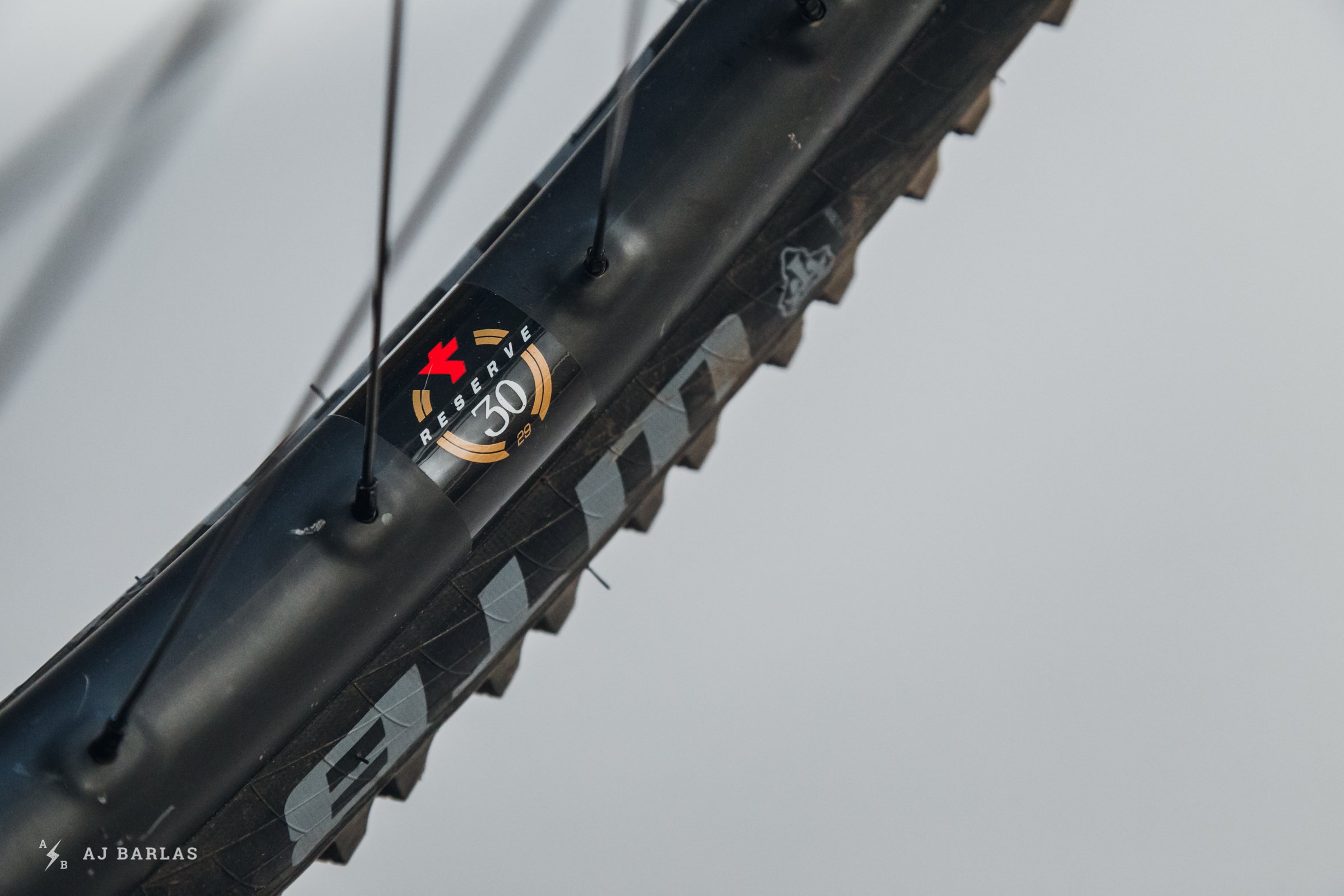
The Santa Cruz Reserve 30 are the toughest carbon wheels I've ridden, and carry a weight of 1,831g.
Maybe there’s an average weight that works for the intended purpose of some products. When it comes to all-mountain wheels, a solid 29-inch set will often weigh around the 1,800g mark (+/-100g), whether carbon or alloy. There are generally more alloy options that weigh around 2,000-gram+ but I regularly see wheels intended for thrashy 6-inch travel bikes, regardless of material, weighing between 1,800–2,000 grams. Going lighter on a 160mm travel bike usually results in a wheelset not lasting a season, in my experience.
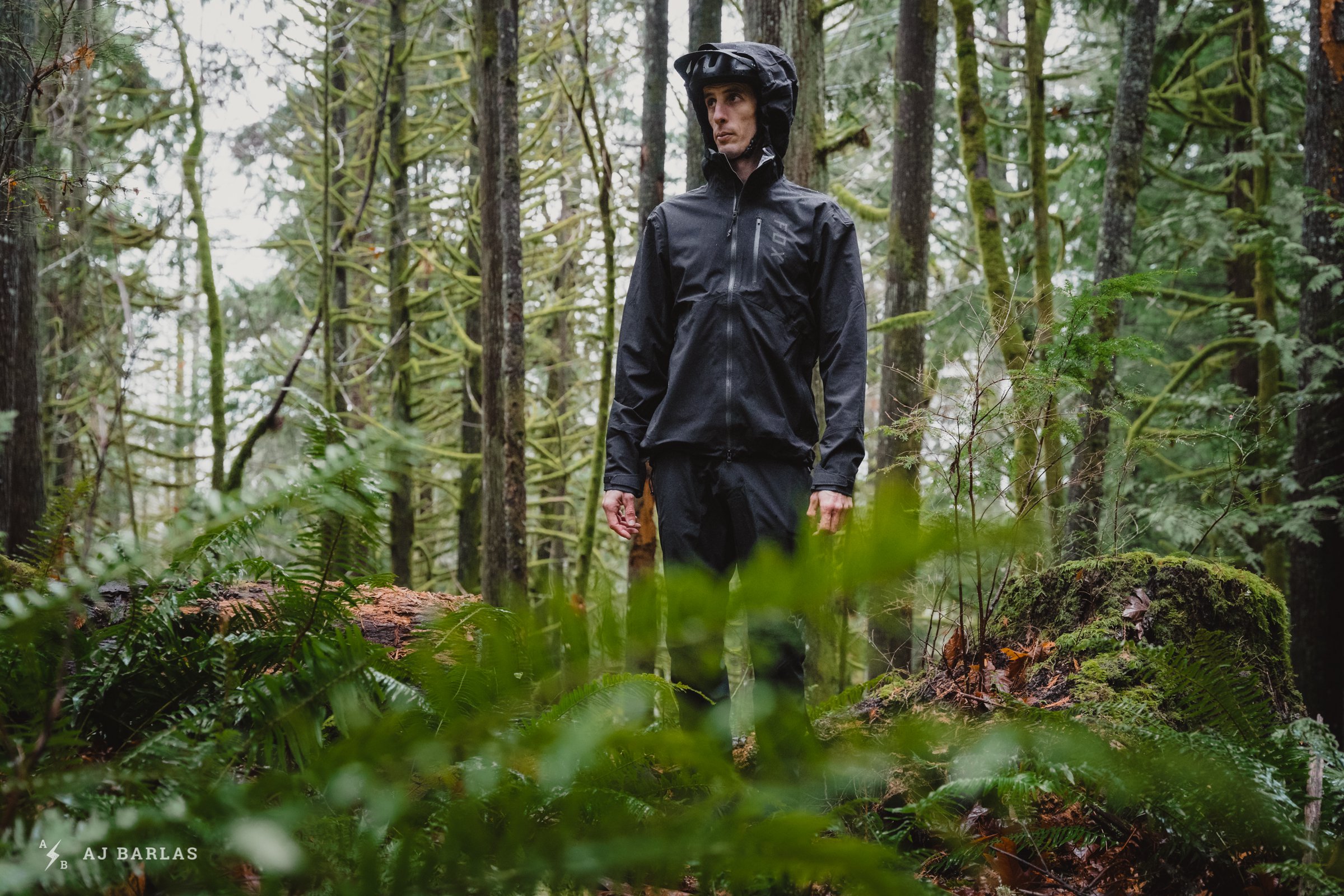
Not the biggest individual, particularly when wearing black. My strength to weight was decent when I was fit but that's not the case now.
The Rider
As my bikes have gained weight over the last handful of years, I haven’t noticed a big change in the effort required to ride them. The time it now takes to climb the trails I frequent has been more heavily affected by a lack of fitness, which is mostly a result of less time on the bike. At the end of the last three or four summers, I've realized I didn’t ride as much as I wanted to and it's impacted my strength as much as not training year-round.
I was riding 5–6 days a week at my fittest, with at least two being structured training rides, and through the winter I added time in the gym and on the spin bike. I'll never match my times winching up the same Squamish climbs from those days because I have no desire to push myself back to that level of fitness but I wonder what it would be like to have that fitness on today's bikes?
Obviously rider fitness has a huge impact on climbing pace, more than the machine's weight beneath us but a lighter bike is surely going to be faster uphill. And of course that absence of mass could become a problem when it's time to tip into the descent. A light wheelset may not last a single descent in terrain where a robust 6-inch travel bike can excel. In addition to not being as durable, I've found lightweight wheels and tires don't track as well as the heavier options I run today.
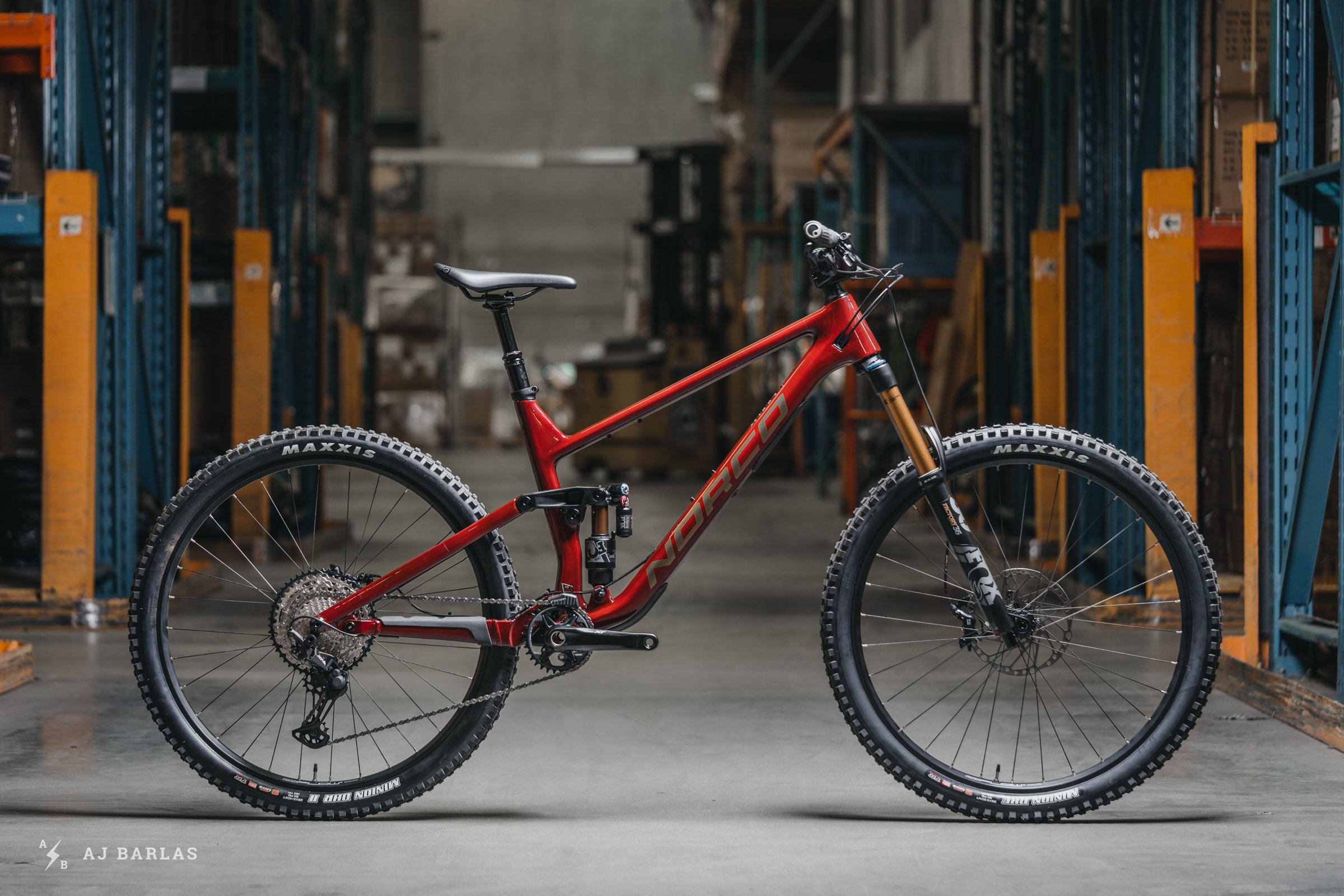
The Norco Sight features a modern geometry that I find quite efficient. It's also not the lightest carbon trail bike but the two balance out well on the trail.
Efficiency
What I believe has a greater impact than bike weight alone is a rider’s strength to weight and the shape of the bike. As my bikes have grown heavier their geometry has improved resulting in a more efficient position on the bike. Riding a frame that fits me better is also more comfortable and that has led to less muscle soreness during and after rides, particularly in my lower back.
The improved position has gone a long way toward increasing my enjoyment on the bike. I’m much happier to hunker down for a long climb before the reward of coming back down, despite my inferior fitness and my heavier bike. The shape of my current bike has made weight an after-thought and it's not holding me back. Friends are often on lighter bikes but they aren't dropping me more, but that's what happens when my fitness declines.
There’s an argument I find myself getting stuck on regarding bike weight. A better position for the individual* can provide a faster or at least more efficient climbing pace than a lighter bike with a less optimal shape. The efficient position should translate to conserving precious energy and it could essentially return a net-zero, which is possibly why I haven’t noticed greater fatigue or effort with the heavier bikes.
*not everyone gets on with the same bike shape
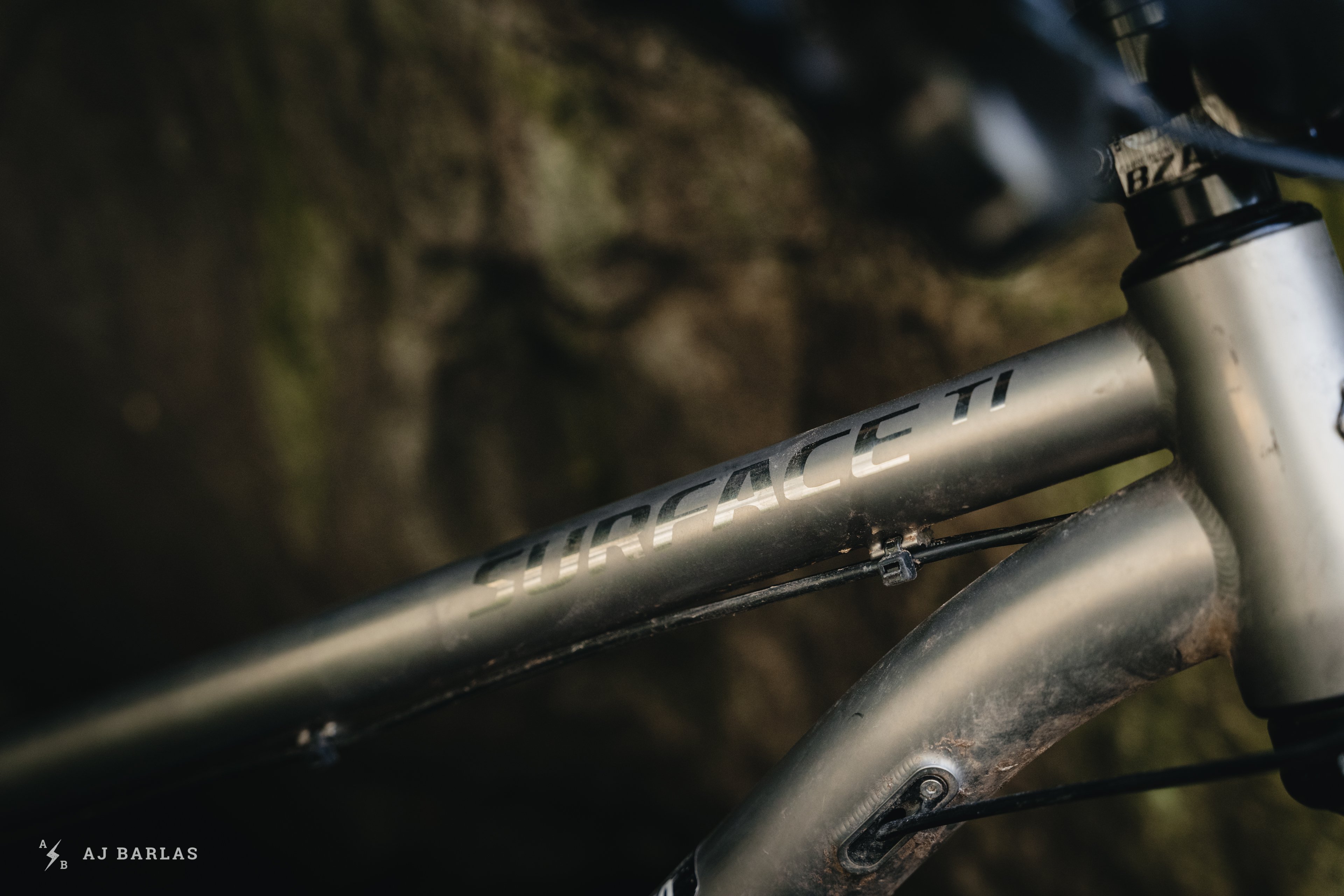
Phil Szczepaniak's Chromag Surface Ti was wonderfully light but even he prefers thrashing on his Santa Cruz Megatrail most of the year.
Bike fit versus bike weight isn't an either or question of course. It's possible to make a bike with good geometry while keeping the weight down. A bike that fits well but is also lighter without compromising durability is a winner which is why many riders keep trying to shave grams.
Where those grams are saved is up to the individual but wheels are a strong option. Learning more about the ratio from sprung to unsprung mass has me wishing for a way to save on the latter. Durable and light wheels are tough to find for a 160mm travel bike, and then there are the inserts and tires that need consideration. Unless you want to deal with flat tires and broken wheels, cutting down rolling weight can be very difficult.
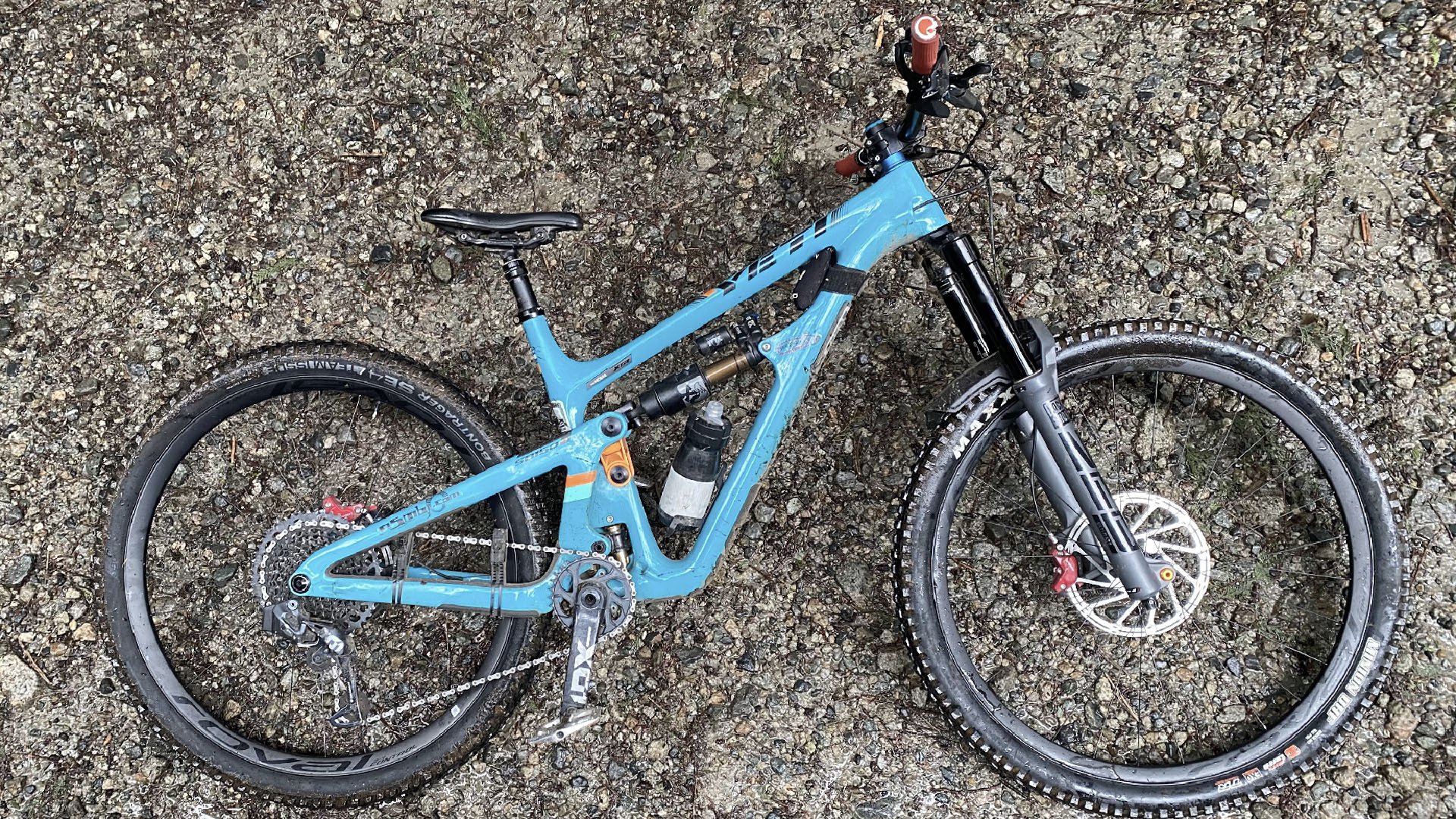
Cam's had some success with lighter carbon wheels and inserts to save those "oh bugger" moments.
Cam appears to have had some success dropping to a lighter weight wheel and running an insert and his experiments have left me thinking about it more. I've also thought about moving back to a lower but more consistently used gear range to help shave unsprung grams like Andrew Major’s experiments, and gearboxes can improve the ratio as well but I haven’t spent a good amount of time on one.
Improving efficiency is a noble goal, but as with bike shape, weight can become part of the efficiency equation, if all else is considered equal. Are true weight weenies a dying breed or will they still be breaking out the scales when graphene supersedes carbon fibre? And if the relationship between sprung and unsprung weight affects suspension performance, what's the magic ratio?
The only guaranteed solution I know is one that keeps nagging me, like an annoying sibling throwing pebbles; get more fit.
Age: 39
Height: 191cm/6’3"
Weight: 73kg/160lbs
Ape Index: 1.037
Inseam: 32”
Trail on Repeat: Changes as often as my mood.
Current Regular: Every test product spends time on Entrail
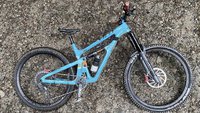


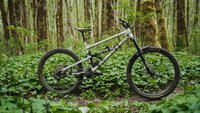







Comments
Sun Hester
2 years, 9 months ago
Below is the order of importance when it comes to climbing speed (assumes geo & AS are the same)
1) Rider Fitness
2) Tires (a. tread pattern b. compound c. weight)
3) Unsprung Mass
4) Overall Bike Weight
It's not that bike weight doesn't matter. It most certainly does and nearly every segment of the sport tries to reduce weight where possible. It's just that there are usually easier gains available.
My recommendation is to just put together a little home gym routine, and figure out the fastest rolling tires that provide adequate traction for you. That's 80% of the equation right there.
Also, it's not hard to have robust carbon fiber AM wheels at under 1700 grams, certainly more robust than any Al wheel at that weight.
Reply
Tjaard Breeuwer
2 years, 9 months ago
Yep, well said.
Obviously fitness is the biggest issue. There is easily a 200% or bigger difference in sustained power output between people, while bike weight only changes the system total system weight (bike+gear+rider) maybe 5%.
I think part of reason lighter bikes are rated so much higher for climbing is in the tires. You don’t mention casing, but lighter tires not only save weight, they also roll easier due to more supple casings, and typically are made with harder, faster rolling rubber.
That said, for rides with extended hike-a-bike sections, 10% weight savings really does make a big difference.
Reply
Pete Roggeman
2 years, 8 months ago
My recent experience with the Santa Cruz Blur really backs up the point about the tires. Sure, it's a light bike, but the biggest difference between that bike and anything I usually ride is the tires - the difference was so vast that I think it's in the double digits for the percentage speed increase over what I usually ride (EXO+ or DD Assegai or Minions).
Reply
Allen Lloyd
2 years, 9 months ago
#2 shouldn't be discounted. I switched to a high volume fast rolling rear tire last year and it is spooky how much faster my bike is. I have faster friends and when we ride rolling terrain I am constantly catching them while coasting and they are pedaling. I get left for dead when it gets rowdy and loose because I don't have the traction, but 80% of the time I am much faster.
Reply
fartymarty
2 years, 9 months ago
#2 is very timely as i'm going for my first ride on a 2.3 Minion SS tonight... after coming off tough Vigis.
Reply
mike
2 years, 9 months ago
Fast tire , ran one with a Shorty on my Django 29er.
Reply
Kurt Adams
2 years, 8 months ago
Which tire ? what bike ?
Reply
momjijimike
2 years, 9 months ago
So true!
Fitness - there are day's I have no problem with climping my maxxgrip front and rear and other day's where my lighter wheelset is just a pain in the a...
For a weekend warrior like me is the biggest limit always me - not the material :)
Reply
AJ Barlas
2 years, 9 months ago
Yes! Fitness always has the largest impact which is why I now realize it's time to ride more (not a bad thing) and get back in the gym (less appealing but the reward is worthwhile). The gym and being fit also help with injury prevention. If I crash right now, I fear the injury suffered would be far worse than if the same crash happened a year ago, and again two years prior to that. Time to suck it up.
Reply
Tim Coleman
2 years, 9 months ago
Agreed on the gym helps with minimizing injuries from crashes. But I've also found that as we get older stretching is getting more important for injury prevention. This could be your own stretching routine, or use a yoga routine aimed at mountain bikers.
Reply
LWK
2 years, 9 months ago
I'm to the point where my cardio fitness kind of is whatever it is. I dont have endless hours to spend "training" and I derive more enjoyment from learning new skills - manuals, jumping, etc. My biggest gain would be to lose a few pounds but that seems easier said than done....
That said, I honestly think as we age that strength and mobility work is more important than endless cardio. I feel really good when I keep up on those things. And it might take a month or two when I let it slide but invariably start to feel and move poorly.
Ride a bit less and do other things. For me, that makes for better riding.
Reply
Velocipedestrian
2 years, 9 months ago
This. I've been noticing age is not kind to my crash recovery.
I think strength and mobility are (for me) super important. Shoulders and wrists have taken a hammering in the last year, and both have led to time off the bike.
Sun Hester
2 years, 9 months ago
If you want more bike fitness, you might get more absolute biking fitness riding less and applying some targeted workouts instead. I know, not as fun.
If you basically hate working out, try downloading a timer app to do interval training sessions of only about 10 minutes. It's called a 'Tabata' and allows you to go really hard in intervals for about 10 minutes. You can do 2 a day at different times if you prefer. All out. Pick your exercise for that Tabata (i.e. rowing, sprinting, jumping jacks, burpies, etc.) and I think you'll see some noticeable improvements in on bike fitness within 2 weeks and a big difference after 8 weeks.
Combine it with some chill stretching or foam rolling.
Reply
momjijimike
2 years, 9 months ago
This comment has been removed.
Tim Coleman
2 years, 9 months ago
I mirror Sun Hester's comments. I find my more recent trail bikes more effort, and slower to pedal uphill than my trail bikes from a few years ago. A small portion of that is that they're much longer and heavier. But the biggest reason is the tires and build I'm choosing. Super DH Magic Marys are 1,450 grams each, they take alot of effort to push uphill, but the grip is incredible. The speed and ability descending of my current trail bike is unreal, and will gladly push the extra weight and rolling penalty uphill for how fun it is to descend.
Reply
Hugo Williamson
2 years, 9 months ago
And we have now bigger tooth cassettes to haul these heavier bikes uphill, with the inherent gear ratios being overall lower, hence less speed up the hill !!
There is an interesting project doing the rounds of a guy on a Pivot 29 er DH made “enduro “ friendly, single crown, dropper etc, which bar the steeper seat angle on the Geometron, ends up probably not too dissimilar. Be an interesting comparison coming from the two starting points, DH frame v Enduro Frame.
Reply
fartymarty
2 years, 9 months ago
I watched this on Vital yesterday. I see a future where DH and Enduro bikes have the same frame and different components hung off them. Very much like the G1 - compare AJs more "trail" setup to Paul Astons more "DH" setup.
Reply
fartymarty
2 years, 9 months ago
AJ - Great article and something that i'm constantly thinking about riding a 40+lb trail bike. Something you don't mention is rider weight / bike weigh. I'm ~93kg therefore should be able to "tolerate" a heavier bike than you at 73kg which is nearly 30% extra. Therefore my 41lb Murmur equates to a 32lb bike for you (given the same relative muscle mass).
Where this argument falls apart is on kids bikes which are (generally) relatively heavy for their weight / strength.
Reply
tdc_worm
2 years, 9 months ago
a heavier rider MAY have a higher peak power output because they are conditioned to move more weight on a routine basis. here is the problem: we have limited fuel tanks and are not immediately recoverable like a machine. as such, the generation of that wattage drains the fuel tank of the heavier rider faster. so yeah, you might be able to move a battleship that a lighter rider cannot budge, but you may find yourself on the sideline quicker. in terms of efficiency, the heavier rider and bike are way less efficient...proper geo can offset that. my position is that bike weight does matter, but not at the expense of durability, of which the heavier and/or aggressive rider may need more....
Reply
AJ Barlas
2 years, 9 months ago
That's an interesting point worth consideration, Marty. Rider weight:Bike weight must have some effect and given my current size, I'm at a greater disadvantage than ever before.
But I also feel that the strength to weight aspect is massive. Heaps of riders push for optimal strength to weight because there is a great benefit. A heavier rider may have a higher power output but if a lighter rider can respectively put out stronger watts, they benefit. It's often worked in my favour (not that I'm some sort of machine, but light with decent relative strength). I noticed as I push for greater mass years ago that it became harder to climb. I hadn't increased my strength at a similar rate and it was noticeably harder as a result. Dropping a couple of kilos while maintaining strength improved things.
And TDC, I agree with you. Durability is important around the Sea To Sky, especially with the terrain I enjoy most. I'll take that weight penalty but it doesn't stop me from wondering about effective ways to improve it, like lighter cassettes as Tjaard pointed out below. But ultimately, improving my fitness and getting back in the gym is what needs to happen for things to improve (for me).
Reply
DanL
2 years, 9 months ago
Too true on the gym issues, AJ. I rarely encounter a trail feature or a climb where the bike is holding me back compared to my fitness and recovery level. I can hear my dad's voice saying "get fit to play squash, don't play squash to get fit" but it's a lot of discipline to not just go out and ride instead!
Reply
NotMeAtAll
2 years, 9 months ago
I saw the other day a bloke take 4 100km trips with a bike to test the weight subjetc. He could get 200w measured all day long. He picked a mountainous road and a flat road. His bike was fitted with bags along the shape of the bike, not those fork bags that makes a bad frontal area.
Anyways, on the mountainous road the difference between his naked bike and the same bike straped with 25kg of things, was 4 minutes and change. On the flat road was some 1 minute and change.
So yeah, if you race, pick the lightest build to finish the race. If not, weight doesn't matter that much.
Reply
Glass
2 years, 9 months ago
My Nicolai G1 weighs 18.5kg and it doesn't stop me climbing the steeps or doing +6 hour rides. I think fitness plays more of a role than bike total weight. Also I like to ride a bulletproof bike rather than have to be careful on the downs so I don't puncture/break parts.
Reply
Cr4w
2 years, 9 months ago
My G1 is over 37lbs and I have zero issue with it. If I'm not climbing well that's a lack of fitness and not bike weight. I have this nagging PTSD-like voice that whispers that my bike should be lighter but there is nowhere on the bike to lose weight that would not compromise effectiveness in a major way. I'll take good riding ergonomics and reliability over light weight every time.
Reply
Reed Holden
2 years, 9 months ago
One question, is that your actual saddle angle? If so, I can imagine why slacker STA's robbed you of power as you seem to need a serious anterior tilt to your pelvis. I think your *comment that "not everyone get's on with the same bike shape" is an important one. I think modern mtb geo has a lot to do with bikes being designed for people with limited to moderate back/hip flexibility. Previous geometry was built around a fit, young racer. It's no wonder it doesn't work out for the masses.
I agree that the weight of the bike is not all that critical. I certainly don't climb faster with empty water bottles rather than 2 filled ones. I also find that suspension bikes (even with plenty of travel) often climb faster for me, even on machine built climbs as the suspension allows me to just sit and pedal. On a hardtail, I often have to use a harder gear so I can take some weight off my saddle to absorb the bumps. The "efficiency" of a hardtail is a bit of a myth I believe for everything except out of the saddle climbs. A power meter on a road bike can teach you a lot about your efficiency. Personally, I don't get more efficient or power moving forwards on the saddle. I do get a lot more efficient when pedalling 90-100 rpm - something I am only able to do on trails with a full sus mtb.
Reply
Cr4w
2 years, 9 months ago
> Previous geometry was built around a fit, young racer. It's no wonder it doesn't work out for the masses.
Previous geometry was also optimized solely for M/L riders and made no accommodation for S or XL+ people who just had to make do. This is largely still true except for a few notable exceptions like Geometron, Norco and Forbidden.
Reply
AJ Barlas
2 years, 9 months ago
"Previous geometry was built around a fit, young racer."
When I was a young, fit racer who spent all my free time training, I had far more issues than today, as a relatively unfit rider with minimal focus on mobility or flexibility. As Cr4w mentioned, older geometry was focused on M/L riders and not the riders at the extreme ends and since moving to a bike that better fits my size, and with an improved understanding of my fit, I'm pain-free on the trails. Imagine if I get back in shape; it would have to be even better, right?
Reply
Kerry Williams
2 years, 9 months ago
I'll try to be brief and to the point (not my strong suit). I'm 52, 5'11" with long inseam. Not until the current generation of bikes, have I been able to find a bike with the right reach and STA that makes climbs feel like I'm not hanging off the back, and a reach that let's me descend in the centre of the bike. I've found that to be waaayyyyyy more important than the weight of the bike. Then there's fitness. I heard a pro bike fitter/physiotherapist interview where she said it's not always bike fit (geometry). A lot of people need to take control of their body health and get flexibility into their bodies to relieve the pain of riding. I joined a bootcamp to help rehab my leg break from 2 years ago, and I continue to go because it's 30 minutes out of my day that has really, really helped me do 3-5 hour rides without back pain. Like all things in life, it's not quite as simple as weight vs geo, but for me, I'll take geo over weight all day, every day. Thanks for the article.
Reply
Cr4w
2 years, 9 months ago
If you've got a broad regime of activity (abstract ways to build strength and conditioning in the gym, other sports) and regularly get in lots of movement/ rehab/ prehab/ maintenance work then riding becomes a way to express fitness rather than an incomplete way to build it. Most of the guys I used to ride with who "got all the fitness they needed on the bike bro" aren't doing very well now and almost none of them are riding at a high level anymore.
Reply
AJ Barlas
2 years, 9 months ago
No, that's Chris Porter's bike. The seat angle is to provide him with the best support when the bike is pointed up hill. Mine is a hair forward of level and that works for me.
Reply
DadStillRides
2 years, 9 months ago
Agree on the hardtail efficiency myth. I was surprised to find I was faster climbing my full sus on my nearest trail network, and I think you're spot on that it's the difference between taking weight off the saddle a bit over even small roots and rocks that you'd just monster truck through with rear travel.
Reply
Vik Banerjee
2 years, 9 months ago
I don't worry about bike weight within a reasonable range. From the data I have my PRs on a 28lb all carbon FS enduro bike and a 34lb metal enduro bike are all in a similar range and mostly down to fitness. I do pay attention to bike fit/ergonomics/suspension setup a lot and to the rolling resistance/grip of my tires. That seems to make much more impact on my performance than +/-2lbs.
I have also been moving from a hyro pack to all water/gear on the bike the last 5-6 years and I have noticed I like the stability that imparts to the bike a lot. The machine tracks very well and it's not easily knocked off line.
Reply
Tjaard Breeuwer
2 years, 9 months ago
In contrast to my statement about tires above, one of the German bike magazine did a test a while back where they pimped a Rocky Mountain Instinct Carbon 70, and checked both segment and lap times and power.
Interestingly enough, the heavier, slower rolling stock tires (DHR I think), actually used less power on the climb than the lighter, faster rolling ones they put on.
They suspect this was due to the fact that this climb was very steep and loose, and thus they experienced less wheel slip and could pedal more easily on the grippier tires.
The downhill gave the same times on each set up, but they suspect that if it had been wet, the stock set up would have pulled ahead.
The time and power savings came in the nearly level gravel road section of the lap along the ridge top. A chunk of the savings there can be ascribed to the lower rolling resistance of the swapped tires.
Stock bike (13.37kg):
Uphill segment 5:24s/188W, flat segment 3:03s/210W.
With faster rolling, lighter tires (12.99kg):
Uphill 5:32s/207W, level 3:00s/182W
With those light, fast tires and large further weight savings (11.08kg)
Uphill 5:20s/200W, level 2:55s/173W
https://www.bike-magazin.de/service/kaufberatung/tuning-am-touren-fully
Reply
momjijimike
2 years, 9 months ago
Thanks for the link! Just downloaded the pdf - very interessting!
Reply
AJ Barlas
2 years, 9 months ago
Thanks for this, Tjaard. Super interesting. I'm always going to lean to grip over faster rolling, less grippy tires regardless of the research but this is a very interesting find.
Reply
Sun Hester
2 years, 9 months ago
I have a SJ Evo that's pretty trick and weighs 32#s.
Currently however, I'm building a weight weenie Spur for the light trail days and the dog days of Summer in TX. Don't think the 6-8#s lighter is going to make much difference in the speed of the bikes, no I believe the real differences to be in the wheels and tires that each respective bike will run.
The Evo has real tires (that still roll not too badly), inserts, and a DH layup rear rim.
The Spur is getting a custom set of 1150 gram wheels and 750 gram XC tires. It was important to me to maintain a lot of separation between these 2 bikes capabilities and intentions.
However, we have a local rough-ish XC loop that I take my wife and kid to. It's a good location because it's 1 way, no pets allowed, I won't put a foot down anywhere and it's not crowded. It's also decidedly more suited to the Spur. The plan is to time my laps out there on both bikes, and also swap the wheels/ tires to determine how this alters the times for each bike. Heck I might even try and add the weight difference to the Spur to assess the difference that makes. Will the Spur be as slow as the Evo if I strap 5-6#s to the frame and run the wheelset/ tires from the Evo?
I dunno, but that's my Hypothesis.
Reply
Kelownakona
2 years, 9 months ago
Great article - time to suck up the PB exodus!!
I've got an trail/xc hardtail Titanium that is super light but has dated gearing - 10speed standard ratio spread.
Climbing is just as easy on my Slash with its 12speed wide range (just not as fast!) but a bike that weighs 10 pounds more.
I suppose a wide range on the Ti would make it an awesome climber but you get the point.
Modern gearing had made weight less of an issue especially when you can have the DH benefits of a heavier burlier bike .
Reply
Dude@
2 years, 9 months ago
For our daily drivers/AM bikes, I agree that the weight difference is minimal. I believe much of this is mental and as suggested fitness. For these bikes, we are already committed in our brains to go for a bike ride which includes suffering so having a heavier bike with more comforts is welcomed.
For me, I generally prefer shorter travel, robust bikes, ie Evil trail bikes, that tend to weigh a bit more.
I think over the years we have accepted that our bikes, even trail bikes, get a bit bloated and weigh over 30lbs.
And yes when uber fit, bike weight is a minimal concern, and the pedaling characteristics seem to have a bit more emphasis in relative feel.
As recently written here about the SC Blur, I kind of miss that light weight XC/trail bike that let's you just go hammer for hour and because it propels you so well, you are more encouraged to ride. That bike that excites to do a ride and fast when on the fence because of time or long day.
It would be curious if you tried the SC Blur and reported back on your thoughts on weight after riding it.
Reply
Tjaard Breeuwer
2 years, 9 months ago
I totally agree.
I think the biggest benefit of a lighter, faster rolling bike, is that it feels faster, and thus encourages you to go out more, and to keep accelerating, because you feel a result.
Reply
AJ Barlas
2 years, 9 months ago
I loved my SC Blur TR from years back. While lighter than any of the bikes that came after it, it was no lightweight. It was over-forked, over-braked, had AM wheels on it, stem and bars similar to what I run now etc. And I still broke wheels, cranks, forks etc. Pete's Blur experience has been awesome, for the trails he's riding it on. If I took that down what I like to ride I'd likely flat both tires, damage the rims, and so on.
I hear you though, I do still enjoy the idea of having a smaller bike but I always end up building them to survive the trails I want to ride. Now my lighter bike that goes fast and has me itching to ride is my dirt jumper. Just carving the road and cycle paths to the local pumptrack/jumps/bmx track is a hoot and gives me the feeling you get from the shorter travel rig.
Reply
Cr4w
2 years, 9 months ago
At this point things that feel slow are way more difficult to manage psychologically than just the weight of the bike. I was running an oval chainring on my G1 and it made the bike feel like I was trying to ride a hobby horse uphill through chocolate mousse. Swapped to a similar-sized round chainring and everything was right with the world with zero weight change. Same with bad body position, running the wrong tire PSI. Or, TBH, Cushcore Pro. On my hardtail it was a revelation but on my G1 it just felt heavy and sluggish. I swapped to Tannus Tubeless, saved 100g on each wheel and gained a lot more peppy feel out of them and that made a huge qualitative difference.
Reply
Cooper Quinn
2 years, 9 months ago
"Are bike fit and a comfortable pedalling position more important than bike weight?"
Bike fit/pedalling position are independent of weight, which you kinda touch on, but as its stated above, that question makes no sense to me.
Reply
Tjaard Breeuwer
2 years, 9 months ago
Agree.
Fit and geometry don’t add weight. So really the choice is about grip/comfort/durability versus weight
Reply
Deniz Merdano
2 years, 9 months ago
yeah this is a puzzling one.. I am far more comfortable descending on the 35lbs Forbidden but I am faster both up and downhill on the 30lbs Instinct... I am far less in control on the descents on the Rocky.. which somehow translates to faster times.
Reply
Mark
2 years, 9 months ago
I'll dare to say that in any sport, efficiency of movement wins out over any other factor. The more efficient you are the less energy your wasting trying to overcome inefficiencies. Unless you can shave 4-5kg off your bikes weight, a kg or two isn't going to make a bit of difference. Thankfully, a lot of riders can probably shed 5kg off their midsection with relatively little effort and that will make a difference in efficiency and getting up the hill.
Reply
Tjaard Breeuwer
2 years, 9 months ago
@AJ, one place to improve unsprung weight without performance or durability drawbacks is in the cassette. With todays giant cassettes, you can easily save over 200g in the cassette alone, going from a heavy to a lightweight one.
The other one is using tooled axles instead of tool free ones, but that seems to have become the standard anyway(probably becasue it is cheaper for manufacturers).
Reply
fartymarty
2 years, 9 months ago
11-36t cassette - it solves #1 and #3 above by forcing you to get fit.
Reply
I_am_beige
2 years, 9 months ago
I've been riding my ripmo af for 18 months and whilst it's a heavier bike than my last few it's by far and away the most comfortable to ride, for any type of riding, and I believe this makes it an easier bike to ride on climbs. I've had more pb's on this bike than any other.
In this time I haven't trained or exercised any differently either so I'm attributing this to the bike.
For me if I enjoy riding a bike I'm more than happy to pedal it anywhere.
Reply
AJ Barlas
2 years, 8 months ago
Truth. If comfortable, will ride. :)
Reply
arca_tern
2 years, 9 months ago
Came for the article, stayed for the Transition with custom vinyl. Tell me more!
Reply
AJ Barlas
2 years, 8 months ago
Dazzle camo with a bright red vinyl. It took far too long to do, looked great from far but up close my lack of vinyl application skills were clear, and was a hoot to ride.
Reply
roil
2 years, 9 months ago
Rider fitness is huge but so is rider skill. If you don't know how to pace yourself, use your gears, have a proper seating position, choose a good line, or just keep up with regular bike maintenance the climb is going to be much harder than it needs to be.
I see a similar disconnect in the automotive space. People will spend mad money to improve the objective performance of the car when they themselves are the weakest link.
Don't get me wrong, I drool over and occasionally buy parts that are beyond my skillset. But that being said, I agree that there is some backward logic (and planned obsolesce) that directs much of the design/engineering behind the bikes we ride.
Reply
Sethsg
2 years, 9 months ago
I would say weight is much less of a factor than being fit, and having a bike with good geo just look at the Commencal+Orange enduro team their bikes are not light yet they still do incredibly well.
Reply
Cooper Quinn
2 years, 9 months ago
Sure... but look at WC XC bikes.
Reply
Hugo Williamson
2 years, 9 months ago
I think the Orange Frames are a lot lighter than most think they are.
Reply
araz
2 years, 9 months ago
I went from a previous gen RM Element to a Banshee Phantom. The Phantom is probably 5ish lbs heavier, and a pretty drastic geo change. I noticed the weight on the first ride or two but quickly forgot about it. I don't track my rides, but I feel just as fast on my normal climbs and am less fatigued if anything at the top. I definitely chalk a lot of this up to the geo/body position. On rougher climbs the Banshee is easier and less tiring for sure -- I think the little extra suspension helps. On really tech climbs it's no comparison -- the steeper SA and longer reach helps me get my center of gravity up ledges and over obstacles. I also think the solidity of the frame comes into play -- I'm a pretty big guy and having less flex makes for a more predictable feel on tech climbs. I find the weight trade off well worth it for that alone. Descents are of course way way better on the Banshee. Only place I miss the RM is on smooth flats, where it was a ton of fun to hammer the pedals.
I'd love to blame my bike for my slow climbing, but that's all about my lack of fitness.
Reply
Skeen
2 years, 9 months ago
I haven’t owned a serious mtn bike that weighs less than 33lbs/ 15kg since 1999. One factor i think of but never hear discussed is how a rider adjusts/ automatically trains to get used to the bike weight they ride. If i only ever rode sub 30lb bikes a 38 pounder would feel real heavy all of a sudden. Also being 200 lbs+ myself, i can agree the rider weight to bike weight ratio makes sense.
Reply
Skeen
2 years, 9 months ago
I haven’t owned a serious mtn bike that weighs less than 33lbs/ 15kg since 1999. One factor i think of but never hear discussed is how a rider adjusts/ automatically trains to get used to the bike weight they ride. If i only ever rode sub 30lb bikes a 38 pounder would feel real heavy all of a sudden. Also being 200 lbs+ myself, i can agree the rider weight to bike weight ratio makes sense.
Reply
DadStillRides
2 years, 9 months ago
Interesting article. I agree on almost all points. It was touched on a bit with the comments about the recent blur review, but the findings assume an average terrain where climbing and descending are nicely separated. There is a lot of traversing with little ups and downs on many of my local trails, and a lighter bike makes a real difference maintaining speed (this being said by someone who rides a banshee with alloy wheels that's never been weighed, so I'm talking light within reason). If you're so lucky to live in a place like the shore, by all means build your bike to maximize the fun part.
BTW, I tried to buy a pair of those Newmen wheels for my hardtail, but didn't have luck finding them in the states (or really anywhere) when I was searching this spring.
Reply
ChazzMichaelMichaels
2 years, 9 months ago
I'm pretty sure my ageing Enduro is about 30lbs. Pretty good for 170mm of travel. Perks of little wheels I guess
Reply
Please log in to leave a comment.